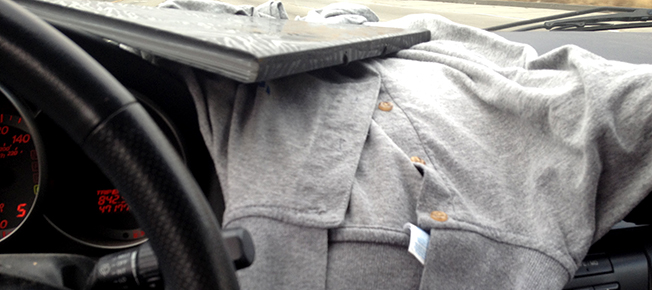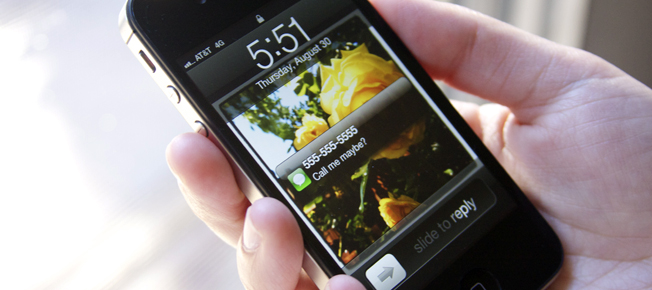This summer, I was shopping at the farmer’s market and on a whim, decided to buy a head of cauliflower. This may seem pretty lame to some of you—especially those of you who put nettle chips (that you hand-picked from a field and dried yourself) on your salads—but it was pretty gutsy of me!
I don’t eat cauliflower with any regularity. I’m fairly certain my mom had some traumatic experience with cauliflower in her childhood, because we never ate it when I was little, and I have always considered it to be devoid of flavor and nutrients. I mean, what kind of vegetable is white? That can’t be normal.
I brought home my bold purchase, put it in my fridge, closed the door. What had I done? Clearly I needed to find out what exactly this thing was and how I could make it tasty.
So I did what any aspiring cook would do: I Wikipedia-ed cauliflower. I learned that it’s in the brassica oleracea family and related to broccoli and Brussel sprouts (which I love). Cauliflower has lots of vitamin C and fiber while also being low in fat and carbohydrates. Unfortunately, it does not have quite as many vitamins and nutrients as broccoli, but it’s pretty close.
Excited to try this alien vegetable, I consulted the regular resources in my kitchen (because I find the number of recipes online terrifyingly daunting): The Betty Crocker Cookbook New Edition and The Good Housekeeping Illustrated Cookbook (the exact 1980 edition my Mom has). Both had recipes involving boiling or steaming the cauliflower, followed by drenching it in fatty sauces, which sounded pretty foul. But then I remembered that my aunt had given us a cookbook for Christmas, Barefoot Contessa How Easy is That?. Inside I found a recipe for “garlic-roasted cauliflower”—and anything with garlic in the title instantly had me drooling.
I consulted the recipe. I needed:
- 1 head of garlic, cloves separated but not peeled
- 1 large head of cauliflower (or two small ones), trimmed, cut into large florets
- 4 1/2 tablespoons good olive oil
- Kosher salt and freshly ground black pepper
- 1/4 cup minced fresh parsley
- 3 tablespoons pine nuts, toasted
- 2 tablespoons freshly squeezed lemon juice
I didn’t have lemon juice, pine nuts, or fresh parsley, but I did have a garlic clove!
- Preheat your oven to 450 degrees.
- Bring a small pot of water to a boil and add the garlic cloves. Boil for 15 seconds. Drain, peel and cut off any brown parts. Cut the largest cloves in half lengthwise.
I preheated the oven and started the water boiling for the garlic cloves. Wait what? Boiling the garlic cloves? Unexpected invaluable lesson: boiling them for 15 seconds makes peeling them a heck of a lot easier!
I took my knife and cut off a floret (think snacking on raw broccoli size), I was getting excited about the prospect of my delectable, garlicky cauli—HOLY CRAP, THERE’S A SPIDER IN MY CAULIFLOWER!
I screamed. Actually, to be more specific, I screamed like I was five. (Side note: I have arachnophobia.) I found myself in the living room, clutching my phone, feeling very itchy, and frantically texting my fiancé to come home from work NOW and save me!
Now, I love farmer’s markets, and I understand that there is an inherent risk that my organic, pesticide free produce might have been walked over by buggies. But, there was a spider…a LIVE spider…in my cauliflower.
To help you better understand my state of mind when confronted with a surprise spider attack, these are the first things I thought:
Where are all his spider friends that must also be lurking in my produce?
How did it live in my fridge for 3 days?!
Is it a radioactive super-spider?!
[Editor’s Note: I saved you from the nightmare-inducing photo link that used to be here.]
While I was deciding if it was safe to reenter my kitchen, I started to ponder the pros and cons of continuing this cauliflower adventure. Before I could do anything though, I needed to deal with the spider.
And by deal with it, I mean I waited until my fiancé came home, thoroughly rinsed (by spraying it down with the hose outside—just kidding) and cut up the cauliflower for me. All while I stood a safe distance away…with our sharpest knife…just in case. Thankfully, he found and killed the spider. (Thanks, babe!)
He wasn’t sure that we should proceed but I decided we were going to be adults and see this through.
After satisfying ourselves that there were no more radioactive spiders, that the cauliflower was clean and edible, and that we had enough of the ingredients to make a go of it, we finally continued with the recipe:
- On a sheet pan, toss the cauliflower with garlic, 3 tablespoons olive oil, 2 teaspoons salt and 1 teaspoon pepper. Spread mixture out in a single layer and roast for 20 to 25 minutes, tossing twice, until the cauliflower is tender and garlic is lightly browned.
Roasting is super hot and I convinced myself that this would vaporize any potential spider buddies.
- Scrape the cauliflower into a large bowl with garlic and pan juices. Add remaining 1 1/2 tablespoons olive oil, parsley, pine nuts and lemon juice. Sprinkle with another 1/2 teaspoon salt, toss and serve hot or warm.
Unfortunately, because we lacked some of the ingredients, it didn’t taste all that great. But if I had, I am convinced it would have been splendiforous! I have yet to try cauliflower again but (now that I no longer consider it the mutant of the vegetable world) I intend to soon.
And since I’m still alive and writing this article, I would call it a major step forward in overcoming my arachnophobia!
Well, I still need saving…but I scream less, and not as loud.

Photo by Elise Lundstrom








